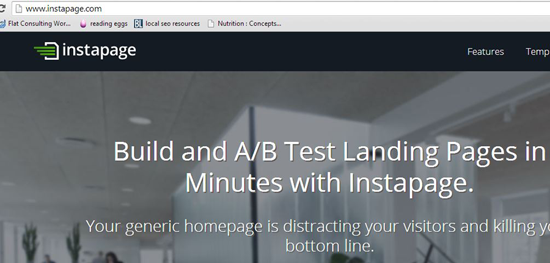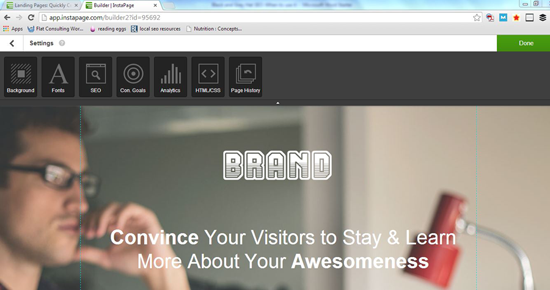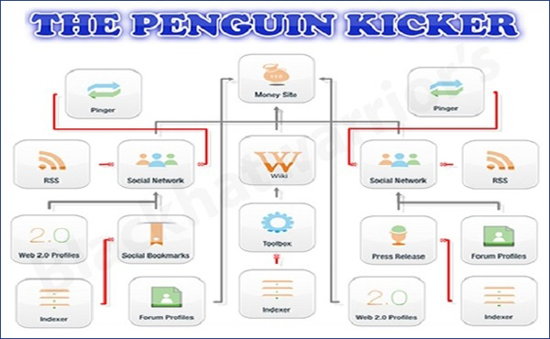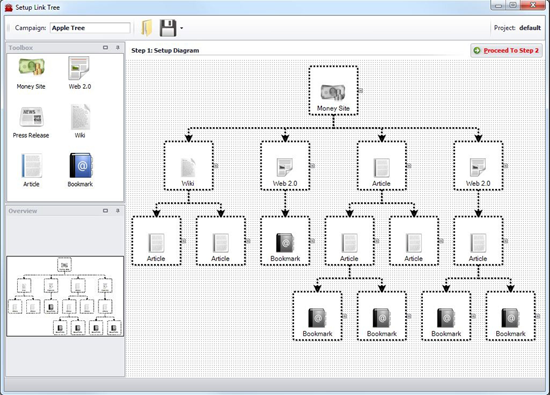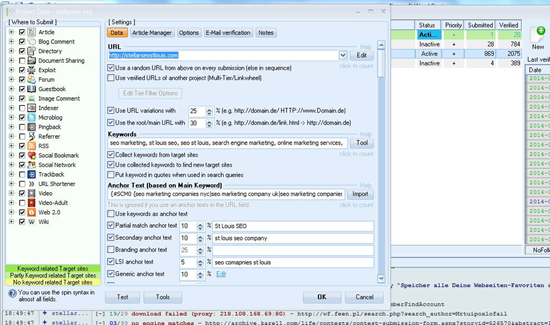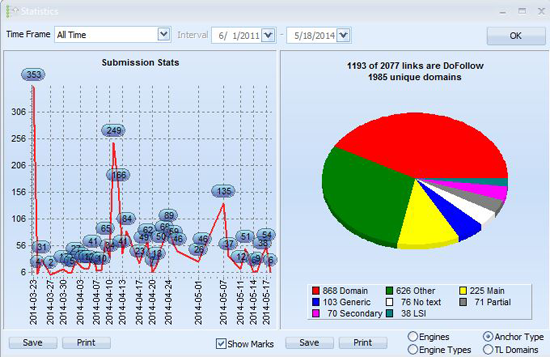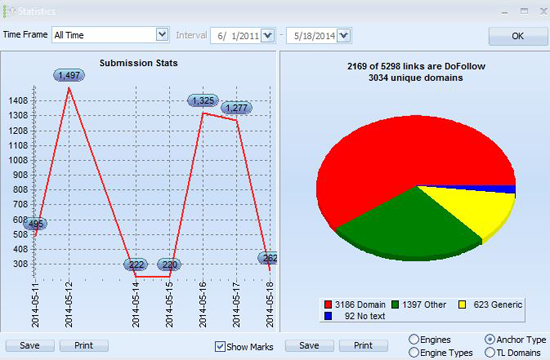When and How to Use Black and Gray Hat SEO

Look to any blog and you will likely see black and gray hat SEO tactics being discussed negatively, followed by dire warnings of what will happen to those who take the path to darkness. If you have a brand, a long-term website, or a Web property that you cannot afford to lose, you should heed the warnings and steer clear of black and gray hat SEO tactics. If you have several affiliate sites, a short-term product such as a seasonal item, or you are selling a few items, you can actually stand to profit nicely from using black and gray hat tactics.
Warning: The following tactics should not be used on a client site without consulting with them and should not be used on any site that cannot afford to be completely de-indexed from the SERPs.
Setting up Disposable Websites
That being said, the first thing you need to understand is the nature and process of setting up "churn and burn" sites. Regardless of the type of marketing you are going to use to get people to your website, you need a landing page or site that converts them or you are wasting your time.
There are essentially two primary methods you can use to set up sites quickly. The first is a CMS such as WordPress. You can find a ton of free templates and create a decent looking site within a few hours. The other option that works pretty well is to use a landing page service such as Instapage. Here is how to get started with either of them.
Setting up WordPress Sites
1. You need to purchase as many domains as you would like to setup sites on. You can buy fresh domains or you can look for domains at auction that already have authority and decent backlink profiles. This is about $10 per domain for new domains.
2. Register the domains using a combination of random Whois information and private registrations to prevent Google from associating you with building spams sites. This is really just an added precaution. Private registration is about $10 per year on average.
3. You need to host each domain on a unique IP address. This can be accomplished by using SEO hosting or by simply setting up a cheap hosting account on a few different sites. Bluehost, GoDaddy, and Host Gator are all good choices. You can also find several hosts that cost as little as $1 per month. Hosting can range from $1 to $50 a month, depending on the options you need.
4. Once you have hosting accounts setup, point the domains to the appropriate host, install WordPress, and select a theme. There are plenty of free themes, so this step can be free.
5. Now that you have site setup, you need some content. You can either write this yourself or outsource it on a site such as Iwriter. You can get content written by basic, premium, or elite writers. You should choose from either premium or elite to get content worth using, this costs as little as $5 for 500 words. I suggest writing your own landing page copy and using the cheap articles for other pages and blog posts. All in, you can get the written content for about $100.
6. If you want a logo, head over to Fiverr and you can get something simple for $5. This will make your site appear more legitimate.
7. Upload the written content to the site along with any images, contact information, and sales information needed.
8. Now you need to go through the site and make sure it is optimized for your keywords. Using a plugin like Yoast will expedite the process. Make sure each page is optimized for a term or a few terms.
9. After you have the site setup, add some social sharing icons to the site. You can then spend about $100 to get some shares and likes for Facebook, again increasing the legitimacy of your site while providing social proof to buyers.
As this point you have a site setup with content, social shares, and the product you are looking to sell for under $300. Building links will be the next step but before we get there, here is how to set up a page using Instapage.
Setting up a Landing Page with Instapage
Instapage is designed to allow you to quickly create landing pages and create variations of those pages in order to optimize for conversions. This is similar to other services such as Unbounce and Lander. Any landing page service should work just fine, so long as you can optimize it properly. Here is what you need to do.
1. Visit Instapage and sign up for an account. They range from free to $179 per month depending upon what you are looking for. The free account allows you to host your page at a subdomain of Instapage. The paid accounts allow you to point your domain to the landing page, essentially eliminating the need for hosting. Additionally, you can install an Instapage plugin for your WordPress site that will allow you to using landing pages in conjunction with your website.
2. The next step is to decide which option you are going to use. I suggest opting for a plan that allows custom domains. This will make your page seem more legitimate and increase conversions.
3. Now you can choose from any of the available templates to create your landing page. Some of these are very simple and others mimic single-page websites. Find the one the works best for what you are selling. Once you have selected the template, you are able to edit it using a simple interface.
4. Once you settle on the layout of your landing page, you now need content. Again, you can write this yourself or outsource it. Using a longer landing page template will allow for more content and will increase your ability to rank.
5. As with the WordPress sites, upload your content once you have it and don't forget a logo.
6. Instapage lets you insert a social widget on the landing pages and again, I recommend adding it and advertising on Facebook, Google +, or Twitter to get a few shares. One hundred dollars should do the trick.
7. Once the page is complete; simply point your domain to it. Instapage provides detailed instructions on how to point your domain to a landing page so that should not be an issue.
You now have a single-page site setup with content, a logo, and social shares for under $300. Let's get to the link building options now.
Gray and Black-Hat Link Building
Gray-hat link building can range from submitting guest posts with rich anchor texts to trading for links. Black hat tactics go from using the 301 redirect method to getting site-wide links from widgets. Some of these methods work better than others and last longer too. Here are a few ways to boost your newly created site to the first page quickly.
Buying Links
Buying links that pass page rank works. It works so well that Google has declared war on the tactic and to some extent have been successful. The upside is that paid links are not always easy to identify, especially if you find them wisely.
Most people get caught because they buy links from a single blog network which gets taken down. Even people practicing white hat SEO get hammered because of this sometimes, just ask Ann Smarty and users of My Blog Guest. When you are looking for links to buy, you should ask yourself how hard it was to find, if the answer is "not very", you should look a little further. Steer clear of people openly selling links on forums since Google is known to troll them from time to time.
If you have no clue where to begin looking for links to buy, here are a couple of services that have been reviewed and tested numerous times by people such as Matthew Woodward and Jacob King, both well known among gray and black hat practitioners.
Link Emperor
Link Emperor is essentially a marketplace for link builders and link buyers to meet up. This is not buying links in the sense that you are paying for a link on a particular website. This is a system in which you sign up for a subscription and you them order various types of links which are them built by the lowest cost link builder available. The price ranges from $147 per month to just under $3,000 depending on the number of links you are looking for.
I group this with link buying because many of the links you buy come from private blog networks owned by the link builders. Since you are getting a ton of cheap links, you may get penalized before you rank and many people have mentioned this as an issue. Check out this review of Link Emperor for more in depth information about the service.
SE Slingshot
This service sells links on a massive, high PR private blog network. If you have spent much time dealing in SEO, you know that a private blog network can be extremely effective for ranking sites, especially for tough keywords. The problem with running a white hat blog network is that it can be expensive between the hosting, buying high PR domains, and producing fresh content for numerous sites on a regular basis.
SE Slingshot owns numerous sites and has setup the network to leave the smallest possible footprint. You can get 50 high PR links from blog posts for $147 or 100 links for $277. The biggest issue I have with their network is that they use spun content for the links, this makes it less likely that they would pass a manual inspection. The upside is that this service has worked for many people, here is a case study done by Matthew Woodward on SE Slingshot.
For the price, I would always choose SE Slingshot over Link Emperor. You will have to build some other types of links if you use SE Slingshot alone though.
Automated Link Building Software
If you want to have more control over where your spam links are being built, using automated tools can help you get the job done nicely. There are several tools available and as you would expect, each of them claims to be the best for the job. Here are three popular and useful automated link building tools.
SeNuke XCR
Pricing- SeNuke comes in a lite version which is $67 a month and the full version which is $147 per month. If you are going to use this tool to the fullest, the full version is the one you need to use.
Pros- SeNuke is pretty simple to setup. The program comes with several built in templates that allow you to simply fill in the appropriate information and hit start. You can also use a drag a drop system to setup custom campaigns.
(Image from SEO Clerks)
Cons- SeNuke is expensive compared to other link building software. The prebuilt templates leave a nasty footprint pointing to your money site, and adding new sites to the program is kind of slow.
The Verdict- Unless you are willing to study the software, create your own templates, and pay a high monthly fee, this program is not for you. Personally, I do not like it but with the right operator, this program can get the job done.
Ultimate Demon
Ultimate Demon is by far the most mentioned link building software and considering the size of commissions affiliate marketers for the product get, this is not surprising at all.
Pricing- Ultimate Demon can be purchased for a one-time fee of $397 or can be licensed for a monthly cost of $47.
Pros – This program is much cheaper than SeNuke. It also contains a simple drag-and-drop interface that will allow you to create multi-level campaigns. This program also comes in handy to set up accounts on Web 2.0 and bookmarking sites. You can create a ton of accounts quickly and export the logins. You can then source those accounts out and have someone manually upload information to each of the accounts to build out a network of decent Web 2.0 sites.
Cons- On the flipside, this program like SeNuke is a bit of a pain to add new sites to. If you buy the program outright, you only get updates for two years. A built in scraper is included to help you find and add new sites but it is slow.
The Verdict – When you consider cost and functionality, this program is better than SeNuke. You have to manually add sites to avoid a footprint which can be time consuming. If you want to build a large base of Web 2.O sites, pay for one month and use this program, otherwise, I still think your money can be better spent.
GSA Search Engine Ranker
I must admit, this is my personal favorite and for good reason.
Pricing- GSA can be bought for a one-time fee of $99.
Pros- GSA looks underwhelming when you open it but once you understand how it works it is anything but. Unlike SeNuke and Ultimate Demon, GSA finds and posts to new sites without you adding them manually. GSA looks for platforms instead of specific sites. This greatly reduces the footprint and saves you time scraping and adding new sites manually. GSA allows you to filter your target sites by keywords, page rank, and several other options. This gives you close control over your links. You will also find a built in article scraper and spinner that creates unlimited content at no extra charge.
Cons- The incredible power of this tool can also be its biggest issue. If you do not know how to set up a campaign you can destroy your site in no time. The sheer volume of links it can build will also rip through captchas solving credits in no time flat. You need to pay the additional $130 to buy GSA Captcha Breaker. If you want to run this program to its full potential, a private server is needed which can cost about $100 per month.
The Verdict- When you compare the overall cost with the potential, this program is a winner. The team at GSA updates the program almost daily and those updates are included with your purchase. I own this program and I wouldn't trade it for any other link building software.
Can Black Hat Provide an ROI for You?
Assuming that you opt to use GSA Search Engine Ranker, you can build enough links to rank your site for about $350 if you get a private server and the captchas breaker. If you run the program on your computer, you will spend $250 for a lifetime of use. Add this to the $300 you spent building out a site and you have between $500-$700 invested in your website and links.
Assuming that your website lasts for six months on the first page; would you get enough traffic to make a return? Take the combined volume for your target keywords and multiply that by the click-through rate for the top three results which is about 50 percent. Take the resulting number and multiply that by your expected conversion rate on your site. Finally, take that number and multiply it by your average profit per sale. Here is an example:
• Total Traffic Potential -10k Visitors per month
• Click-Through Rate- 50%
• Conversion Rate- 3%
• Average Profit -$250
10,000 x 50% = 5000
5000 x 1% = 50
50 x $250 = 12,500 Monthly Profit Potential
Using the assumed numbers above, you can see that you could make an ROI even if your site only reached the top three for a single month. Not bad for eight hours or less work of worth setting up a single site.
We all know that theories and the real world do not always line up, so I have set up a site and used GSA to rank it. Here are the details.
• Target Keywords: St Louis SEO, St Louis SEO Company, Stl SEO, stl seo firm, and several variations of these terms.
• Purchased new domain name for $10 (stellarseostlouis.com)
• Made a single page WordPress Site and hosted on a server $50
• Had about 300 words of content written for $3 on Iwriter.
• Added a free contact form from Jot Forms and an existing video I had.
• Left 10 comments on Website Magazine to the new domain to get it indexed.
• Set up a campaign on GSA using spun content generated from the built in tool and filled in the other fields with content made with a free trial of SEO Kontent machine. This put the keywords on page 3-5 within a few weeks of starting the campaign. Here is how they were built:
• I then waited about two months and set up a second tier of links pointing to the tier one links from GSA. The content again came from SEO Kontent Machine and GSA's internal scraper. I set up tier two on 5/11/14.
Here is how some of the keywords are ranking as of 5/17/14
• St Louis SEO #9
• St Louis SEO Company- #10
• stl SEO- #18
• STL SEO Firm- #10
In setting this up, I created the worst campaign I could. Only spun content was used for the links and I allowed links to be built on pages ranging for PR n/a and higher. The primary keyword is St Louis SEO and as you can see above, it was used for only a small percentage of the links. Other variations of the term such as STL SEO, and long tail terms like St Louis SEO Companies where used in addition to naked URLs and generic anchor text.
The site just reached page one for St Louis SEO a few days ago. I have gotten a few calls and closed one SEO contract last week. I explained to the caller that he had found a test site and sent him over to my main site, so that may have helped close the deal.
Regardless, the point of the case study was to prove you could use black hat SEO to make money online. The key is to set up your sites properly and maximize your investments into the site. Remember to check the ROI potential before getting started. Once you find some good targets, get out there and starting making some extra money online.
Thanks for reading and I hope you have enjoyed!
I would love to hear your questions or comments below.
 Author Bio: Travis Bliffen is the founder of Stellar SEO, a search marketing and design agency located near St. Louis Mo. Travis loves researching and writing about SEO strategies and implementing innovative strategies for his clients. Connect on Twitter @theseoproz.
Author Bio: Travis Bliffen is the founder of Stellar SEO, a search marketing and design agency located near St. Louis Mo. Travis loves researching and writing about SEO strategies and implementing innovative strategies for his clients. Connect on Twitter @theseoproz.



